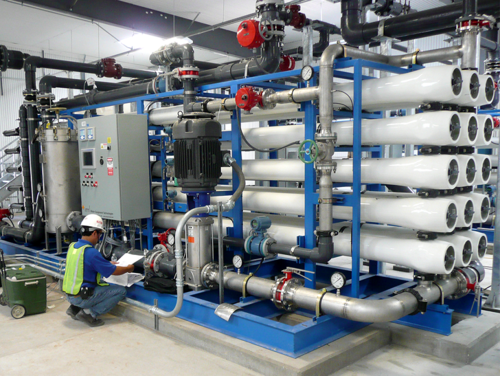How PFAS Therapy Ensures Tidy and Sustainable Water
The existence of PFAS, typically understood as "permanently chemicals," presents substantial obstacles to water top quality and public wellness. The effects of these therapies prolong beyond instant health and wellness benefits; they increase critical concerns regarding lasting water management techniques that must be resolved to ensure a durable future.

Recognizing PFAS Contamination
PFAS, or per- and polyfluoroalkyl compounds, have actually emerged as a significant ecological issue as a result of their extensive prevalence and persistence in the setting. These artificial chemicals have been used in different commercial applications and customer products, including non-stick cooking equipment, water-proof clothing, and food packaging, due to their distinct residential or commercial properties such as water and grease resistance.
The contamination of dirt and water resources by PFAS takes place largely via industrial discharges, firefighting foam usage, and leaching from land fills. pfas management. Once released, these compounds are immune to destruction, leading to their buildup in the atmosphere. This perseverance raises important concerns, as PFAS can travel lengthy distances with groundwater and surface area water systems, influencing alcohol consumption water products and environments

Wellness Risks of PFAS
The determination of PFAS in the setting elevates significant health and wellness worries for people revealed to these materials. Known as "forever chemicals," PFAS do not break down conveniently and can gather in human bodies in time. Research study has actually connected PFAS direct exposure to different damaging wellness results, including immune system dysfunction, liver damages, and boosted risk of particular cancers cells - pfas management. Significantly, studies have actually shown elevated cholesterol degrees and prospective influence on reproductive and developmental wellness, specifically in expectant individuals and infants.
The universality of PFAS in consumer items, such as non-stick kitchenware, water-repellent fabrics, and food product packaging, further magnifies the threat of exposure. Consuming alcohol water infected with PFAS is a considerable issue, as these chemicals can seep into groundwater resources. Vulnerable populaces, including kids and those living near industrial sites, might deal with intense risks because of their creating systems and potential for higher direct exposure levels.
As understanding of these wellness risks continues to expand, governing agencies are beginning to establish standards for PFAS degrees in alcohol consumption water. Public health efforts are necessary to reduce direct exposure and protect neighborhoods from the long-lasting results of these unsafe substances.

Cutting-edge Treatment Technologies
How can we properly take on the difficulties positioned by PFAS contamination in water sources? Cutting-edge therapy innovations are emerging as vital services in the pursuit for clean water. These methods concentrate on the removal or destruction of per- and polyfluoroalkyl compounds (PFAS), which are notorious for their perseverance in the environment.
One appealing approach is adsorption utilizing innovative materials, such as activated carbon and ion exchange materials. These products have shown effectiveness in recording PFAS molecules from water. One more significant technology is membrane filtering, which makes use of nanofiltration and reverse osmosis to different impurities at the molecular degree, therefore supplying a barrier against PFAS.
Furthermore, progressed oxidation procedures (AOPs) employ solid oxidants to damage down PFAS compounds into safe byproducts. This approach is especially effective for treating very contaminated water resources. Bioremediation techniques, using particular microbes, are also being checked out to degrade PFAS.
As study continues, crossbreed systems that integrate multiple technologies might provide boosted performance, dealing with the complexities of PFAS contamination. The advancement and implementation of these innovative treatment technologies are important steps toward ensuring the safety and sustainability of our water resources.
Benefits of Reliable PFAS Therapy
Efficiently click site treating PFAS contamination in water sources significantly enhances public health and environmental safety and security. PFAS, often referred to as "forever chemicals," are resistant to destruction and can gather in the human body, leading to serious health risks such as cancer, liver damage, and immune system dysfunction. By carrying out reliable therapy methods, areas can lower direct exposure to these harmful substances, inevitably boosting the wellness end results of their populaces.
Additionally, successful PFAS treatment adds to the conservation of local environments. Polluted water can detrimentally impact aquatic life and interrupt the fragile equilibrium of regional environments. By guaranteeing clean water, therapy processes protect biodiversity and maintain environmental honesty.
Additionally, efficient PFAS removal can foster public confidence in water top quality. When neighborhoods are ensured that their drinking water is complimentary from damaging contaminants, it advertises a feeling of security and health. This count on is important for area engagement and assistance for ongoing water administration initiatives.
Future of Water Sustainability
In the middle of growing worries about water top quality and shortage, the future of water sustainability rests on ingenious strategies and collective initiatives. As neighborhoods encounter the looming threats of pollutants like PFAS, the growth of sophisticated therapy modern technologies is necessary. These innovations not only focus on the elimination of dangerous compounds but additionally promote the reuse and recycling of water, thereby decreasing overall demand.
Moreover, effective water governance plays a more helpful hints vital function in making sure lasting methods. Policymakers need to integrate scientific research with governing structures to develop clear guidelines for water usage and therapy. Stakeholder interaction, including neighborhood communities and industries, great site fosters a sense of common obligation and urges lasting techniques throughout different industries.
Investment in facilities is likewise important; updating aging systems to include modern-day purification and filtration approaches can considerably boost water top quality. Embracing green innovations, such as all-natural purification systems, can give eco-friendly solutions.
Ultimately, the future of water sustainability lies in an alternative strategy that combines modern technology, plan, and community involvement. By prioritizing these aspects, we can safeguard our water resources for generations ahead, making sure tidy and sustainable water for all.
Verdict
In final thought, the efficient therapy of PFAS is crucial for guaranteeing clean and sustainable water. Eventually, robust PFAS therapy approaches contribute to long-term resilience in water monitoring, fostering public count on in water high quality and promoting sustainable methods.